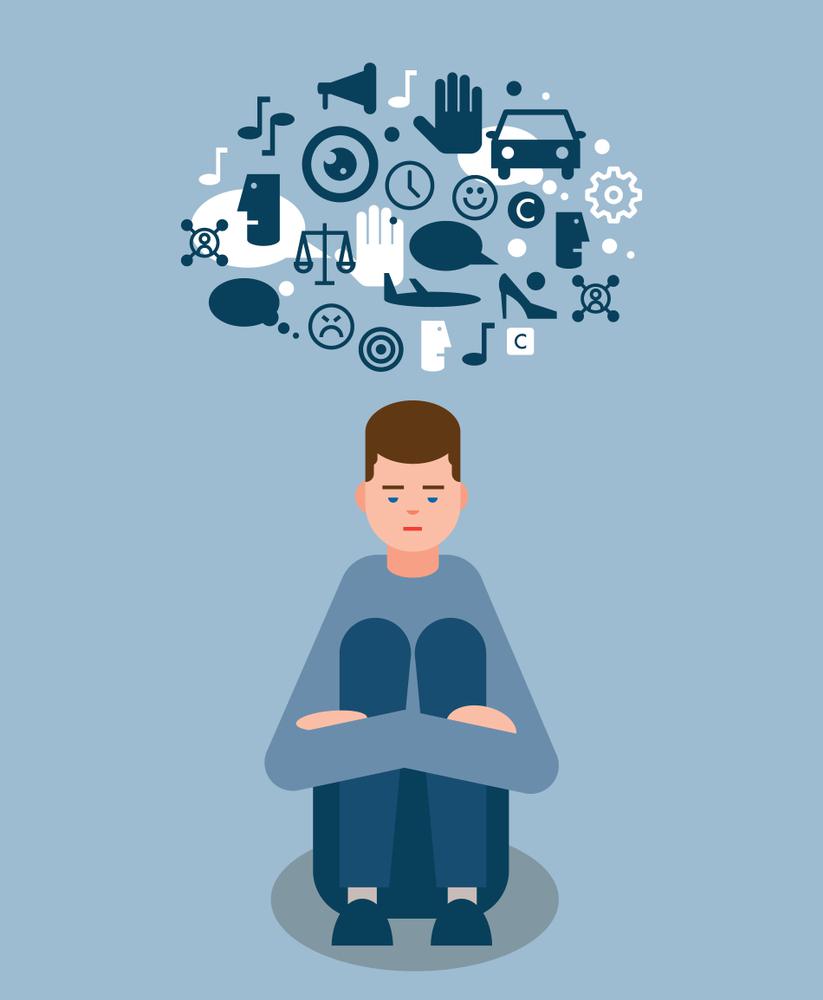Teaching Healthy Coping Skills and Calming Strategies
Sept. 7, 2021
Stress, worry, irritation, and frustration may all be triggered by situations that require emotional self-regulation. Anxiety can affect neurodivergent learners' ability to understand and use communication, as well as their ability to deal with sensory input, working memory, the flexibility of thinking, and social imagination. Individualized coping techniques are therefore required, taking into consideration the learner's skills, preferences, and familiarity with a particular setting.
The Importance of Emotional Self-Regulation

The ability to regulate one's emotions allows a person to: recognize when they are emotionally charged, consider the repercussions of their reaction, and engage in activities that help them achieve their goals. A person who lacks emotional self-regulation may be more likely to experience emotional outbursts and experience those negative feelings for a longer amount of time compared to their peers. They also usually have a “short fuse”, are prone to mood swings, and tend to erupt in rage.
In terms of what coping methods we can use with neurodivergent children, they will vary depending on developmental levels and emotional needs. Here you may find ways of dealing with tantrums if it occurs quite often. nd Using the correct techniques at the appropriate level can help them gain resilience and learn tools to stay calm when dysregulated.
Identifying Overload Symptoms
An individual with emotional regulation issues may be unable to communicate their feelings of stress, anxiety, or sadness. It is important to identify these symptoms so that you can assist your child the best way possible and potentially prevent stressful situations and difficult behavior. These symptoms may include sensory avoidance (hand on ears, closing eyes, retreating somewhere), a desire for sensory input (bumping into furniture, getting into a small, tight space). a rise in repetitive activities, such as repeatedly touching the same items, bolting, or eloping the scene, retreating, and refusing to engage, a rise in stimming activities, an increase in echolalia, or self-harming behaviors.

Some of these actions might be an attempt to self-soothe, while others could indicate worry or distress. Helping your child understand emotional regulation and how it affects them can help diminish emotional upsets and promote healthy coping skills.
Teaching Emotional Self-control in 4 Easy Steps
Help your child learn the strategies of taking control of their emotional roller coaster. Your child should be able to identify and categorize emotions before they are able to regulate them.
Step 1: Create a chart with two columns that shows the emotional range your child experiences on a daily basis. Enable them to develop their own labels for each level. Let your child categorize parts of the chart according to their emotional state, such as "feeling happy", "a bit frustrated", "upset" and “extremely upset” in the first column. The second column should be titled, "I feel this way when..."
Step 2: Discuss emotional levels for particular situations. Children should be taught the concept of assigning emotional degrees to circumstances. There are several ways in which a person working with a child might prompt them. A good exercise would be for both of you to jot out a list of hypothetical circumstances and ask them to describe how they would feel in each situation. This is where you would write in the second column.

Step 3: Talk to your child about what appropriate reactions should be in response to different scenarios. Discuss the acceptable reactions he or she should have and use the emotional levels chart to determine what should be taken seriously and what should be a “small” issue. Explain to your child that there are varying degrees of frustration and anger. Large outbursts are an inappropriate response to a “small” problem. Talk about what these situations look like.
Step 4: Incorporate coping methods into your child's life. Recognize and practice methods that children might use when they are feeling angry or defeated. Pose hypothetical circumstances to them and have them role-play how they could utilize their techniques in real life. You may then ask them what they will do in real life if they have learnt how to deal with the issue in preparation. Encourage them to be prepared for any circumstance that may happen.
As a result, this lesson is not intended to replace the need for a child to engage in an appropriate functional behavior that can be used to cope with a difficult situation. The following strategies should be viewed as a list of tools to use as one sees fit.
In the moment: Emotional Dysregulation
A child in an emotionally charged state will be more likely to cope at all levels if the following general rules are in place:
- Talk less
- Use visual supports
- Practice and prepare
- Provide a safe space
- Encourage asking for help

The following methods can be used to calm someone down when they show indications of anxiety, anger, overload (overstimulation), tension, stress, or upset.
- Provide a way out or an escape. In certain cases, a person may only need to leave the location to recover control and lessen the amount of anxiety and pressure.
- Create a sensory basket full of options for a sensory seeker. Some ideas to include might be a fidget spinner, a squeeze ball, a tangle toy, and therapeutic putty are all great options. Some children like chewing gum, while some might enjoy sucking on ice.
- Create relaxing exercises or routines. Try to schedule a special bonding routine you do every day with your child, like a story or a song before bedtime.
- Try distraction or redirection. Distracting a person from what is troubling them may not always succeed but giving a diversion might help them move past the issue. Talking about a favorite topic or directing their attention to something interesting can sometimes stop an emotional outburst in its tracks.
- Make time for physical activity. This is one of the most effective ways to relieve tension and anxiety for everyone. Practice simple stretches or Pilates inspired movement or make it a game and create some fun poses for Animal yoga.
- If you have the means, get a pet. There have been several studies about the benefits of animals and mental health.
- Create clear timetables and procedures. Predictability and familiarity minimize anxiety. Visual schedules depict the day's events. Job sequencing lays out the stages for completing a task and promotes independence.
Below you will find ways your child can help themselves navigate emotional upset and how you can provide assistance:

Teaching your child appropriate calming activities and coping skills for their emotional regulation can help your child take control of their emotional distress. Try some of these strategies if your neurodivergent child suffers from any symptoms of dysregulation. You may find a new routine or activity you enjoy doing together. In the Kids Academy parenting blog you may fiтв a lot of useful information regarding child-breeding and education.
About the author
United States, CA, Felton












